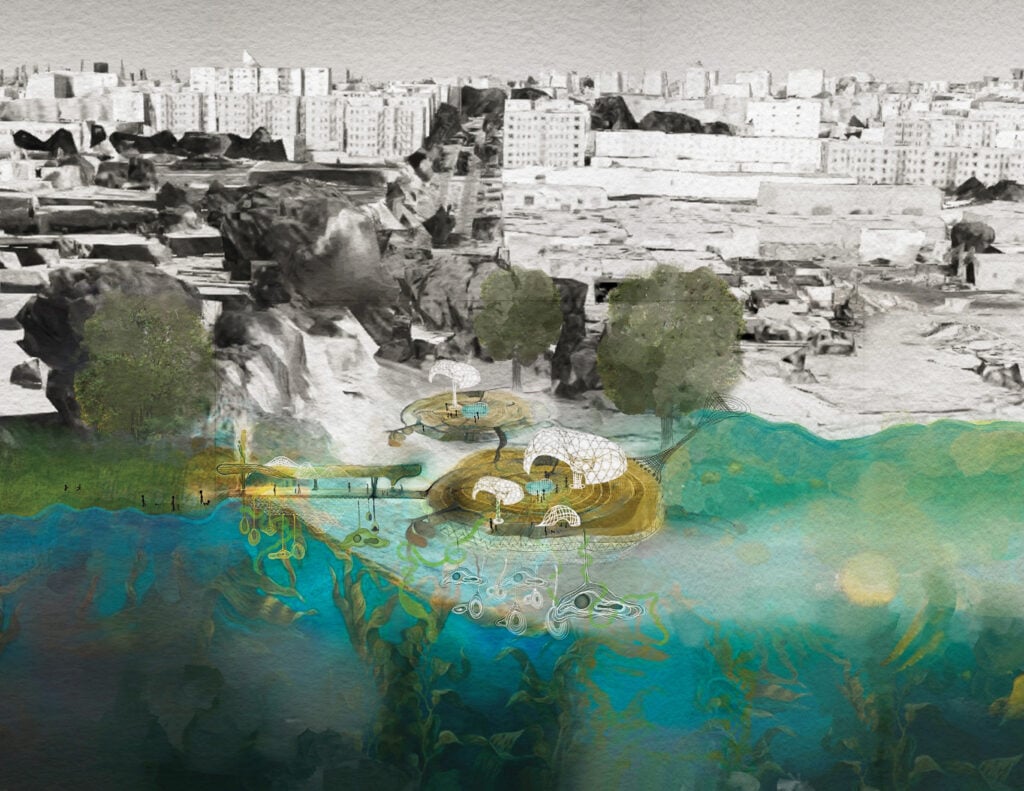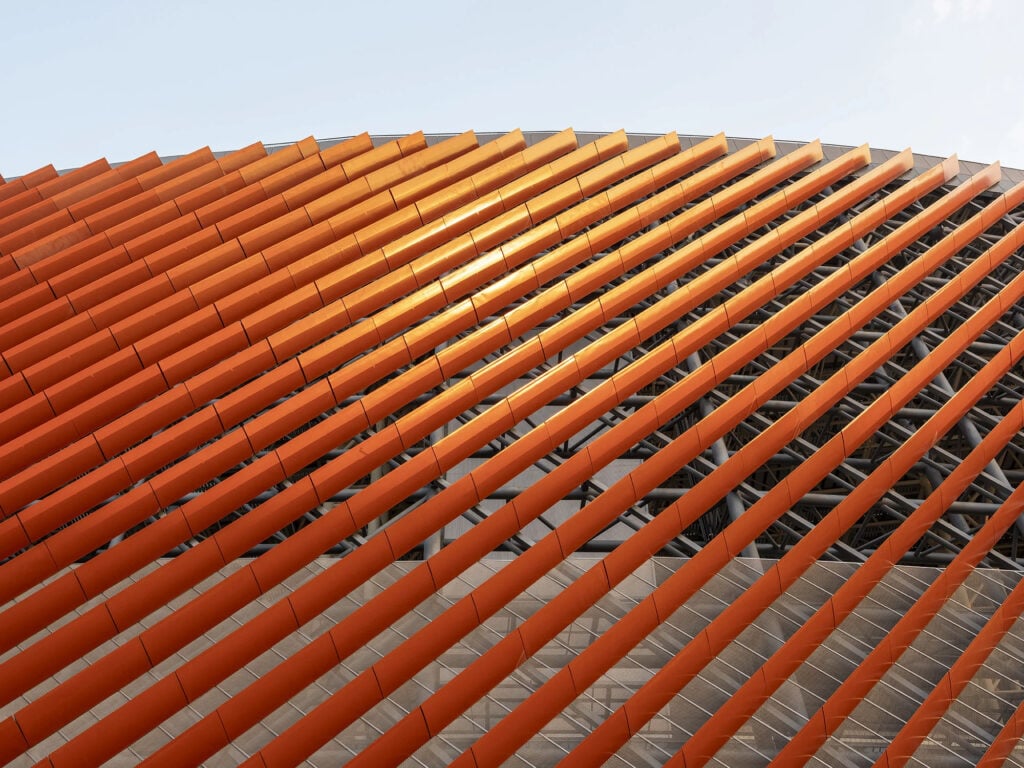
May 7, 2024
A ‘Ghost River’ Flows Through Baltimore
A THIN SKY-BLUE LINE meanders across the streets and sidewalks in Remington, a neighborhood in central Baltimore. While it looks peculiar against a backdrop of brick row houses, industrial buildings, and grassy parks, it actually traces part of the landscape that was there long before urbanization: Sumwalt Run. This creek was entombed in 40-foot-deep culverts and storm sewers over a century ago.
The blue squiggle is part of Ghost Rivers, a public art and history installation developed by the interdisciplinary designer Bruce Willen and his studio Public Mechanics. A couple of years ago, Willen, who has lived in Baltimore for over two decades, was on a walk around Remington when he heard the rushing flow of Sumwalt Run emanating from manhole covers and sewer grates. He was reminded of the city’s many underground waterways and thought the lost creek deserved to be memorialized—so after incorporating community feedback, he created a walking tour that traces a mile-and-a-half-long portion of Sumwalt Run. He etched the creek’s path on the public-right-of-way pavement directly above it and installed 12 plaques that describe its natural ecology and how it shifted from a vital resource into a nuisance that was engineered away.

But Ghost Rivers isn’t just a monument to the past: It’s also a provocation for the future. As aging sewer systems fail, cities are exploring how green infrastructure can become a more sustainable alternative. This includes decades-long projects to bring buried streams back into the open. The concept is known as daylighting, and Ghost Rivers does this metaphorically. It surfaces Sumwalt Run in the public’s mind and imagination and, crucially, brings it into the present-day context of climate change. “That really is the first step toward thinking about what the landscape looks like in 100 years and what the next evolution of these waterways is,” Willen says. “It’s only a recent phenomenon where we humans see ourselves as separate from nature.”

Would you like to comment on this article? Send your thoughts to: [email protected]
Latest
Profiles
Zoha Tasneem Centers Empathy and Ecology
The Parsons MFA interior design graduate has created an “amphibian interior” that responds to rising sea levels and their impacts on coastal communities.
Viewpoints
How Can We Design Buildings to Heal, Not Harm?
Jason McLennan—regenerative design pioneer and chief sustainability officer at Perkins&Will—on creating buildings that restore, replenish, and revive the natural world.
Products
Behind the Fine Art and Science of Glazing
Architects today are thinking beyond the curtain wall, using glass to deliver high energy performance and better comfort in a variety of buildings.





